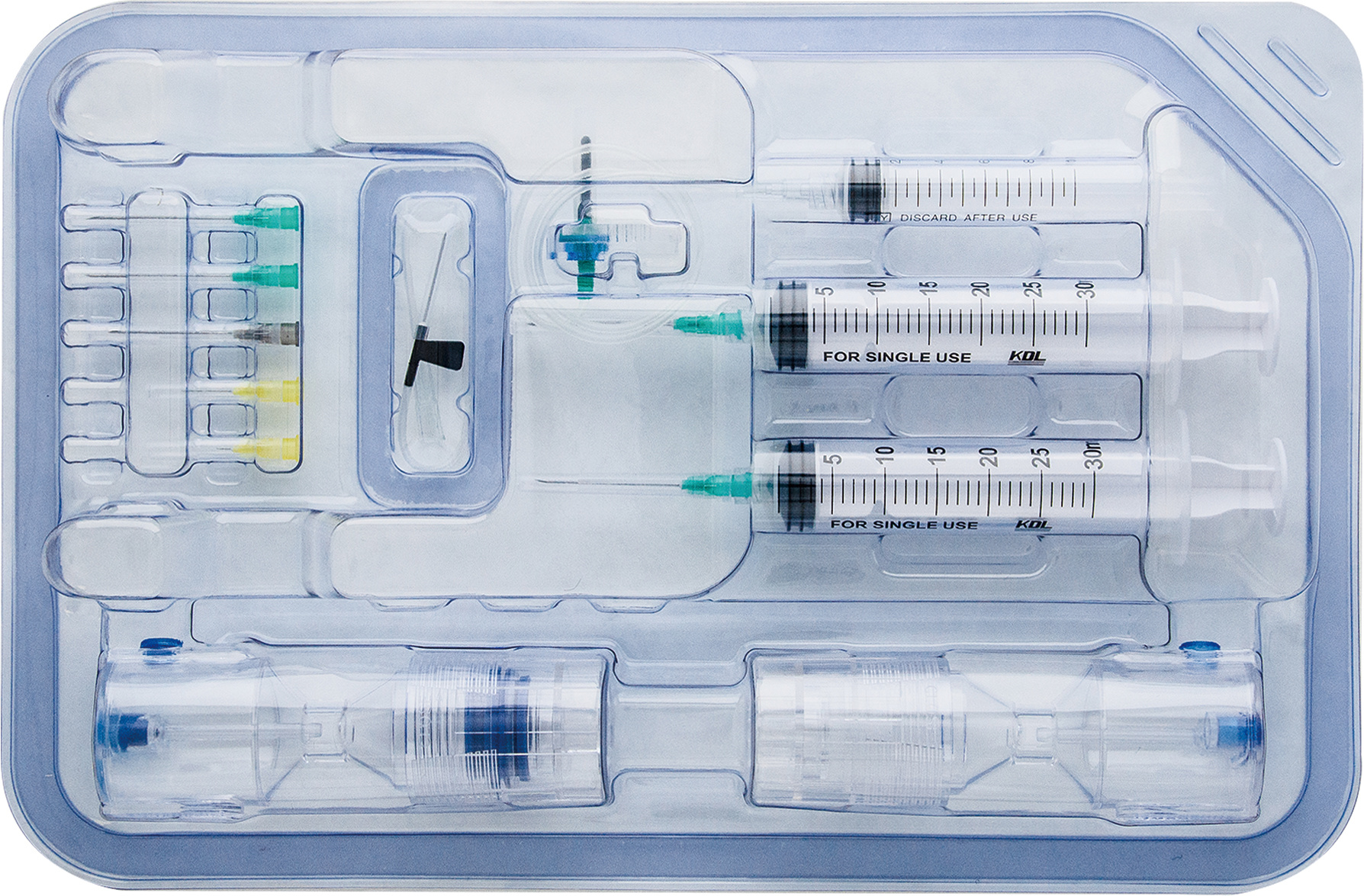
News
How much do you know about PRP's ability to relieve pain?
08 Jul,2025

Platelet-rich plasma (PRP) is a blood product made through centrifugal concentration. It is rich in a high concentration of platelets, with a platelet concentration 5 to 10 times that of whole blood. It contains various growth factors and has properties such as anti-inflammation, promotion of cell proliferation, and tissue repair. At present, PRP has been widely applied in fields such as stomatology, orthopedics, plastic surgery, and otolaryngology. It has shown good therapeutic effects in promoting and accelerating soft tissue healing and bone regeneration, encouraging skin rejuvenation, and facilitating the healing of long-standing wounds, with high safety. Autologous PRP is derived from the patient's own plasma, featuring a relatively simple preparation process, no risk of immune rejection or disease transmission, and thus is convenient for clinical application.
PRP obtains high-concentration platelet plasma mainly by centrifuging autologous whole blood based on the differences in the sedimentation coefficients of whole blood components, with a platelet concentration 5-10 times that of whole blood. According to the number of centrifugations, it can be divided into one-step centrifugation, two-step centrifugation and three-step centrifugation. Some scholars, after comparing different centrifugation methods, believe that the two-step centrifugation is a better choice for preparing therapeutic PRP. In terms of preparation methods, it can be categorized into laboratory preparation and commercial preparation, with the former being more widely used. Laboratory preparation is convenient for clinical application due to its advantages such as low production cost and easy accessibility, but it has high requirements for operators. Commercial preparation has lower requirements for operators and boasts advantages like obtaining relatively stable PRP, easy quality control, and automation. However, it is difficult to be widely used in clinical practice due to factors such as the high cost of instruments and kits. Since the preparation of PRP is affected by many factors (such as centrifugal force, centrifugation time, temperature, operation process, and activation method, etc.), there is currently no unified standard.
Platelet-rich plasma (PRP) has a wide range of applications in the treatment of painful diseases, mainly including the following:
1. Painful diseases of the musculoskeletal system: such as osteoarthritis, "tennis elbow", meniscus injury and cartilage defect, rotator cuff injury, chronic muscle injury (for example, 80% of people who sit for a long time in the office suffer from chronic muscle strain pain), etc.
2. Neuropathic pain.
3. Pain related to chronic refractory pelvic diseases.
4. Other painful diseases: such as chronic refractory wounds, etc.
Advantages of PRP compared with traditional treatments
1. Safety: Currently, PRP used in clinical practice is all autologous PRP, that is, derived from the patient's own blood components. It hardly causes rejection or other immune - related problems, thus reducing the treatment risk.
2. Efficacy: PRP is rich in various growth factors, which can accelerate tissue repair and regeneration, help patients relieve pain and restore function more quickly, and the therapeutic effect is more long - lasting.
3. Convenience: The operation of PRP treatment is simple, generally no surgery is needed, the time consumed is short, and the effect is quick to show.
4. Natural property: It comes from the patient and is applied to the patient, so that the patient has no sense of foreign body invasion, and is more likely to accept and adhere to the treatment.
Osteoarthritis is a chronic joint disease characterized by degenerative changes in articular cartilage as the core pathological feature. Its clinical manifestations include joint pain, dysfunction, and structural damage, and it is the primary cause of disability in middle-aged and elderly people.
At present, its traditional core treatment methods include two major categories: non-pharmacological interventions and drug therapy, but they have no effect on structural improvement. As an emerging therapy for osteoarthritis, PRP treatment has gradually attracted people's attention.
Indications for PRP Treatment in Osteoarthritis
Suitable for PRP treatment:
1) Patients with early-stage osteoarthritis who have a shorter disease course and milder symptoms will achieve better results with PRP treatment;
2) Patients who are ineffective or intolerant to traditional treatments, such as those allergic to drugs or with obvious side effects from long-term use of hormonal drugs, PRP is a good option;
3) For patients who are unwilling or unsuitable for surgical treatment, PRP is also an effective conservative treatment method.
The Shuangwei Biotechnology PRP kit has the following advantages:

- High degree of automation: The preparation and extraction process is fully automated. It is composed of a disposable platelet-rich plasma preparation kit and a medical centrifuge, achieving "one-time centrifugation, one-stop sealing, and one-click preparation", reducing manual operation errors and improving the preparation efficiency and accuracy.
- Completely closed and pollution-free: The separation and extraction process is completely closed, effectively avoiding external pollution, reducing the risk of infection, and ensuring the quality, safety and reliability of the prepared PRP.
- Convenient operation: The PRP with the required concentration can be obtained only through one-time centrifugation. The whole preparation process only takes 15 minutes, which greatly shortens the preparation time and improves the clinical work efficiency.
- Precise and adjustable concentration: Through mode selection, the concentration can be precisely adjusted from 2 to 8 times. It can provide personalized PRP concentrations according to the conditions and treatment needs of different patients to achieve the best treatment effect.
- Adjustable components: Consumables can be optionally configured to prepare leukocyte PRP or complex leukocyte PRP, realizing the adjustability of PRP components and further meeting the needs of different clinical application scenarios.
Previous article
Related News
PRP Technology – Repair and Anti-Aging
2025-10-14
Clinical Application of PRP in Dermatology
2025-10-10
